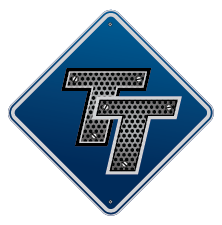High Road Question (possibly Better Answered By Brett)
Topic 11406 | Page 1
Here's how our High Road Training Program breaks down:
To Get Your CDL Permit:
- Rules & Regulations
- Driving Safely
- Transporting Cargo Safely
- Air Brakes
- Combination Vehicles
- Pre-Trip Inspection
- Driving Exam
To get your CDL endorsements which are optional but highly recommend:
- Transporting Passengers
- Doubles And Triples
- Tankers
- Hazardous Materials
Two sections we've built ourselves with info you'll need for everyday life on the road:
- Logbook
- Weight & Balance
Two sections for anyone considering flatbed:
- Cargo Securement
- New York State Coil Endorsement
So you only need the first group for the permit.
Pre-trip Inspection:
A pre-trip inspection is a thorough inspection of the truck completed before driving for the first time each day.
Federal and state laws require that drivers inspect their vehicles. Federal and state inspectors also may inspect your vehicles. If they judge a vehicle to be unsafe, they will put it “out of service” until it is repaired.
CDL:
Commercial Driver's License (CDL)
A CDL is required to drive any of the following vehicles:
- Any combination of vehicles with a gross combined weight rating (GCWR) of 26,001 or more pounds, providing the gross vehicle weight rating (GVWR) of the vehicle being towed is in excess of 10,000 pounds.
- Any single vehicle with a GVWR of 26,001 or more pounds, or any such vehicle towing another not in excess of 10,000 pounds.
- Any vehicle, regardless of size, designed to transport 16 or more persons, including the driver.
- Any vehicle required by federal regulations to be placarded while transporting hazardous materials.
Logbook:
A written or electronic record of a driver's duty status which must be maintained at all times. The driver records the amount of time spent driving, on-duty not driving, in the sleeper berth, or off duty. The enforcement of the Hours Of Service Rules (HOS) are based upon the entries put in a driver's logbook.
Combination Vehicle:
A vehicle with two separate parts - the power unit (tractor) and the trailer. Tractor-trailers are considered combination vehicles.
Doubles:
Refers to pulling two trailers at the same time, otherwise known as "pups" or "pup trailers" because they're only about 28 feet long. However there are some states that allow doubles that are each 48 feet in length.

Here's how our High Road Training Program breaks down:
To Get Your CDL Permit:
- Rules & Regulations
- Driving Safely
- Transporting Cargo Safely
- Air Brakes
- Combination Vehicles
- Pre-Trip Inspection
- Driving Exam
To get your CDL endorsements which are optional but highly recommend:
- Transporting Passengers
- Doubles And Triples
- Tankers
- Hazardous Materials
Two sections we've built ourselves with info you'll need for everyday life on the road:
- Logbook
- Weight & Balance
Two sections for anyone considering flatbed:
- Cargo Securement
- New York State Coil Endorsement
So you only need the first group for the permit.
Thanks. I was thinking there's no way I would be done in time if I had to study all of that. In that case I'm almost done.
Pre-trip Inspection:
A pre-trip inspection is a thorough inspection of the truck completed before driving for the first time each day.
Federal and state laws require that drivers inspect their vehicles. Federal and state inspectors also may inspect your vehicles. If they judge a vehicle to be unsafe, they will put it “out of service” until it is repaired.
CDL:
Commercial Driver's License (CDL)
A CDL is required to drive any of the following vehicles:
- Any combination of vehicles with a gross combined weight rating (GCWR) of 26,001 or more pounds, providing the gross vehicle weight rating (GVWR) of the vehicle being towed is in excess of 10,000 pounds.
- Any single vehicle with a GVWR of 26,001 or more pounds, or any such vehicle towing another not in excess of 10,000 pounds.
- Any vehicle, regardless of size, designed to transport 16 or more persons, including the driver.
- Any vehicle required by federal regulations to be placarded while transporting hazardous materials.
Logbook:
A written or electronic record of a driver's duty status which must be maintained at all times. The driver records the amount of time spent driving, on-duty not driving, in the sleeper berth, or off duty. The enforcement of the Hours Of Service Rules (HOS) are based upon the entries put in a driver's logbook.
Combination Vehicle:
A vehicle with two separate parts - the power unit (tractor) and the trailer. Tractor-trailers are considered combination vehicles.
Doubles:
Refers to pulling two trailers at the same time, otherwise known as "pups" or "pup trailers" because they're only about 28 feet long. However there are some states that allow doubles that are each 48 feet in length.

Here's how our High Road Training Program breaks down:
To Get Your CDL Permit:
- Rules & Regulations
- Driving Safely
- Transporting Cargo Safely
- Air Brakes
- Combination Vehicles
- Pre-Trip Inspection
- Driving Exam
To get your CDL endorsements which are optional but highly recommend:
- Transporting Passengers
- Doubles And Triples
- Tankers
- Hazardous Materials
Two sections we've built ourselves with info you'll need for everyday life on the road:
- Logbook
- Weight & Balance
Two sections for anyone considering flatbed:
- Cargo Securement
- New York State Coil Endorsement
So you only need the first group for the permit.
Thanks. I was thinking there's no way I would be done in time if I had to study all of that. In that case I'm almost done.
Thank you for asking the question! I was wondering also. :)
Pre-trip Inspection:
A pre-trip inspection is a thorough inspection of the truck completed before driving for the first time each day.
Federal and state laws require that drivers inspect their vehicles. Federal and state inspectors also may inspect your vehicles. If they judge a vehicle to be unsafe, they will put it “out of service” until it is repaired.
CDL:
Commercial Driver's License (CDL)
A CDL is required to drive any of the following vehicles:
- Any combination of vehicles with a gross combined weight rating (GCWR) of 26,001 or more pounds, providing the gross vehicle weight rating (GVWR) of the vehicle being towed is in excess of 10,000 pounds.
- Any single vehicle with a GVWR of 26,001 or more pounds, or any such vehicle towing another not in excess of 10,000 pounds.
- Any vehicle, regardless of size, designed to transport 16 or more persons, including the driver.
- Any vehicle required by federal regulations to be placarded while transporting hazardous materials.
Logbook:
A written or electronic record of a driver's duty status which must be maintained at all times. The driver records the amount of time spent driving, on-duty not driving, in the sleeper berth, or off duty. The enforcement of the Hours Of Service Rules (HOS) are based upon the entries put in a driver's logbook.
Combination Vehicle:
A vehicle with two separate parts - the power unit (tractor) and the trailer. Tractor-trailers are considered combination vehicles.
Doubles:
Refers to pulling two trailers at the same time, otherwise known as "pups" or "pup trailers" because they're only about 28 feet long. However there are some states that allow doubles that are each 48 feet in length.

Thank you for asking the question! I was wondering also. :)
Glad I wasn't the only one. What school are you going to and when do you go?

Glad I wasn't the only one. What school are you going to and when do you go?
I'm signed up for weekend classes at United, starting in December. Hopefully the cold and snow won't be too harsh at that point...
Glad I wasn't the only one. What school are you going to and when do you go?
I'm signed up for weekend classes at United, starting in December. Hopefully the cold and snow won't be too harsh at that point...
Congratulations young lady! !!! Don't let the cold weather scare you, you're a Canuck after all.

Congratulations young lady! !!! Don't let the cold weather scare you, you're a Canuck after all.
Thank you! Scheduled my DOT physical today, as well. On my way out of Tractor Supply, I saw a woman driver sitting in her truck and went to talk to her. She asked me if I had ever been in the cabin of a truck and I said "negative". She invited me to climb in and check it out. I was so happy. :)
DOT:
Department Of Transportation
A department of the federal executive branch responsible for the national highways and for railroad and airline safety. It also manages Amtrak, the national railroad system, and the Coast Guard.
State and Federal DOT Officers are responsible for commercial vehicle enforcement. "The truck police" you could call them.
Little Trucker, you only really need to study the first section of Brett's list. The middle section about hazmat and tankers is not required right out of the gate, do you can skip it.
Also so, read the logbook and weight and balance sections. Then you will be ready to rock at Swift!
Logbook:
A written or electronic record of a driver's duty status which must be maintained at all times. The driver records the amount of time spent driving, on-duty not driving, in the sleeper berth, or off duty. The enforcement of the Hours Of Service Rules (HOS) are based upon the entries put in a driver's logbook.
HAZMAT:
Hazardous Materials
Explosive, flammable, poisonous or otherwise potentially dangerous cargo. Large amounts of especially hazardous cargo are required to be placarded under HAZMAT regulations

Little Trucker, you only really need to study the first section of Brett's list. The middle section about hazmat and tankers is not required right out of the gate, do you can skip it.
Also so, read the logbook and weight and balance sections. Then you will be ready to rock at Swift!
Thanks, Errol. I've already aced the logbook section. I'll definitely check out weight balance tomorrow. Right now, my brain needs a break. I've already got my DOT medical card (good for 2 years). I've got all the stuff I need for school. I'm pretty much set. I just gotta knock out that exam. Wish me luck!!
Logbook:
A written or electronic record of a driver's duty status which must be maintained at all times. The driver records the amount of time spent driving, on-duty not driving, in the sleeper berth, or off duty. The enforcement of the Hours Of Service Rules (HOS) are based upon the entries put in a driver's logbook.
HAZMAT:
Hazardous Materials
Explosive, flammable, poisonous or otherwise potentially dangerous cargo. Large amounts of especially hazardous cargo are required to be placarded under HAZMAT regulations
DOT:
Department Of Transportation
A department of the federal executive branch responsible for the national highways and for railroad and airline safety. It also manages Amtrak, the national railroad system, and the Coast Guard.
State and Federal DOT Officers are responsible for commercial vehicle enforcement. "The truck police" you could call them.
New Reply:
New! Check out our help videos for a better understanding of our forum features

















Preview:








 TT On Facebook
TT On Facebook
Ok guys. I am like 40 percent done with the High Road test on this site but I have a couple of questions. For the written exam to get your class A it seems like some of the sections are just for if you want to drive something in addition to your truck or if you want the other endorsements like Hazmat. I'm currently in a super cram session so I just want to study what I absolutely have to. If I'm just getting the regular Class A CDL with air brakes and combination, in order to pass the written test do I need to study the transporting passengers (which seems to be all about buses), the hazardous materials, the doubles and triples section (I won't be driving any of those any time in the near future), the tankers section (I will be reefer so it doesn't seem like this applies to me) or the New York State Coil Endorsement section? Will these be on the test or are these just extras for later if you want to get these endorsements?
The reason why I am cramming is because Swift said I need to take and pass my written exam this Friday so I can start school on the 30th. I will be in school for two weeks, then I will take the driving exam. If I pass that it's on the road with the trainer. So things are moving pretty quickly and I don't have any time to waste. I'm STRESSED OUT!! I have been studying studying studying for ten hours straight for the last three days trying to soak everything up. If I don't need it to pass the written exam then I don't want to waste time on it right now. I can always come back later for that other stuff.
CDL:
Commercial Driver's License (CDL)
A CDL is required to drive any of the following vehicles:
HAZMAT:
Hazardous Materials
Explosive, flammable, poisonous or otherwise potentially dangerous cargo. Large amounts of especially hazardous cargo are required to be placarded under HAZMAT regulations
Doubles:
Refers to pulling two trailers at the same time, otherwise known as "pups" or "pup trailers" because they're only about 28 feet long. However there are some states that allow doubles that are each 48 feet in length.
Reefer:
A refrigerated trailer.
HOS:
Hours Of Service
HOS refers to the logbook hours of service regulations.